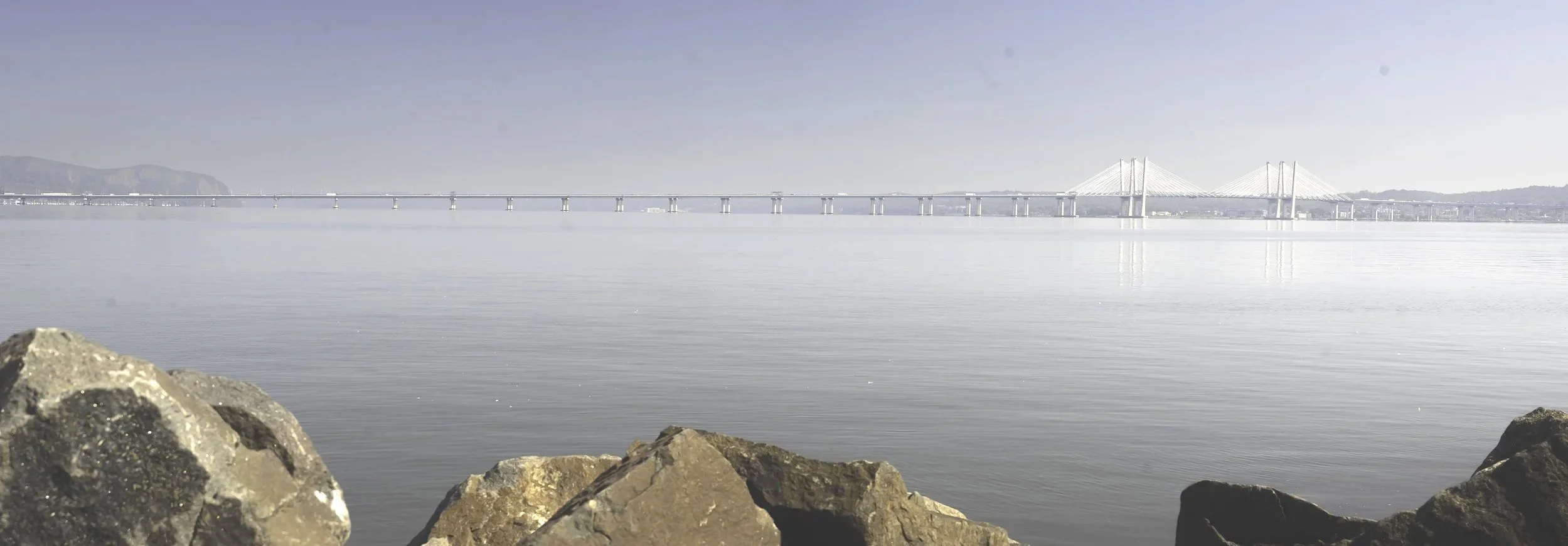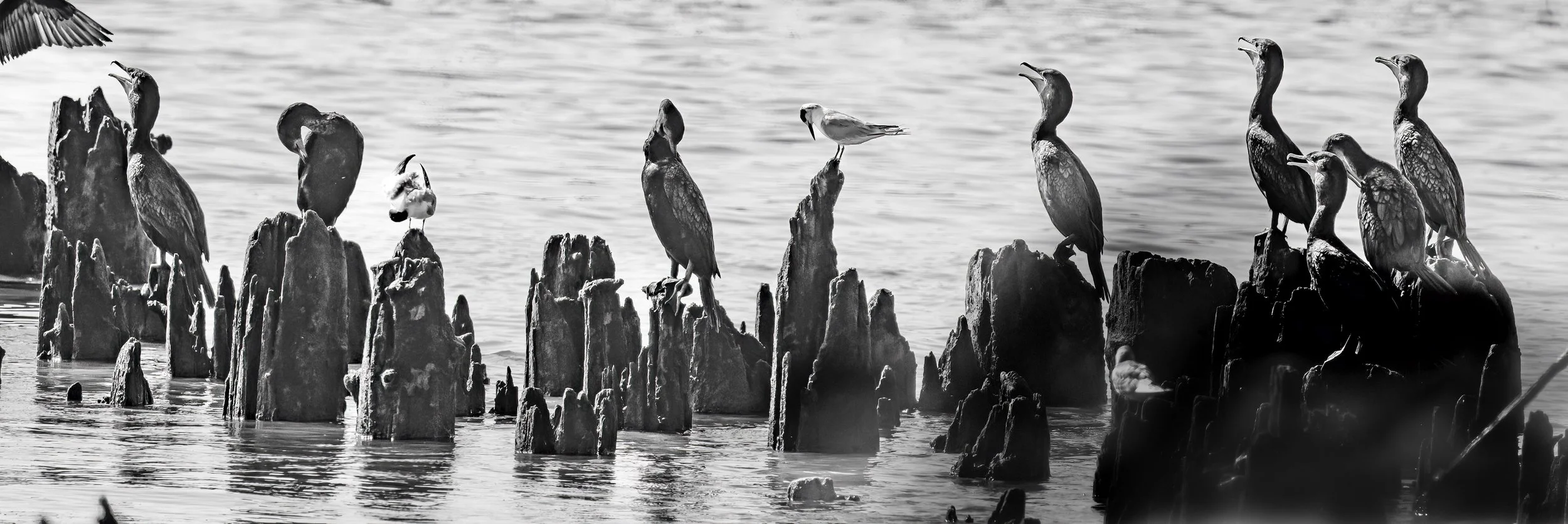Piermont Pier
Tappan Zee Bridge
The Tappan Zee Bridge (aka Gov Mario Cuomo Bridge) was named for the Tappan tribe of the Lenape people and “Zee”, a Dutch word meaning sea. As the Hudson winds its way south, it reaches its widest and one of its shallowest points along its 306 mile course here at the bay between Nyack and Tarrytown. This wide expanse of brackish water creates a habitat suitable for a wide variety of wildlife. Piermont Pier, a 4000’ long extension into the Hudson just south of the Tappan Zee enables people to walk, bike, or even drive well out into the bay affording great looks at the local scenery and wildlife.
As I drove out along the pier this morning, my first wildlife sightings were of Double-crested cormorants. As I scanned along the flocks, I noticed one individual swimming along in the shallows with an interesting fish in its mouth. This is one species that I would not be able to photograph in its usual environment for it is a bottom-dweller called a Hogchoker. Double-crested cormorants feed by foraging in both clear and muddy water, usually towards the middle to upper levels of the water column. The fact that he snagged this bottom dweller speaks to the shallow depth of the water near the pier.
Double-crested cormorant with Hogchoker
DC Cormorants with Forster’s terns
Historically, Piermont Pier served as a means of passengers from the Erie Railroad which ended here in Piermont to travel further by boat to New York City. All the way out on the southeast end of the pier, remnants of the old boat pilings. During World War II, almost half a million soldiers boarded boats here to take them to the battle grounds of Europe and the pier earned the nickname of “Last Stop USA”. All the remains today are broken worn pilings which serve as perches for aquatic birds such as the Double-crested cormorants and Forster’s terns found here today.
During low tide in the Hudson, vast mudflats are exposed along the north side of the Pier. Shore birds such as the Semi-palmated plovers and Semi-palmated sandpipers I found today take advantage of the exposed mud to search for crustaceans, insects and worms.
Semi-palmated sandpiper Nikon Z9 with Z180-600mm at 600mm 1/1250 sec, f/11, ISO 1600
One of our smallest sandpipers, the Semi-palmated sandpiper (named for the slight webbing between the toes) spends its summers along the northeast coast and up into New England and Canada. During the winter, it will migrate south to South America. Studies have shown that this little sandpiper may migrate from here to South America via a non-stop flight of over 2000 miles!
Semi-palmated plover Nikon Z9 with 180-600mm at 600 mm 1/1250 sec, f/11, ISO 1600
The semi-palmated plover seen above was feeding side-by-side with the sandpiper. We are getting into this plover’s peak time for migration south and since most of the breeding plovers are far north of us during the summer, there is a good chance that this one (actually there was a group of three) is on his way south to the southern states and into Central and South America.
Caspian tern
One more bird of interest spotted along the mudflats at Piermont Pier was this Caspian tern.The Caspian tern (Hydroprogne caspia) is the largest tern species, easily recognized by its robust body, thick red-orange bill, and striking black cap that contrasts with its white and pale gray plumage. Found worldwide along coastlines, large lakes, and rivers such as the Hudson, it primarily feeds on fish, diving from the air to catch prey in shallow waters. Caspian terns are known for their loud, distinctive calls and solitary nesting habits, usually laying eggs on sandy or gravelly shores. Due to their size and striking appearance, they are a favorite subject for birdwatchers and nature photographers alike. (Guilty as charged!) These birds are widespread. While their breeding grounds are fairly localized, during other times of the year, they can be found around large bodies of water inland and along the coasts.
Tech Tip - While not exactly a photographic tech tip, it is important to check on local tide charts when heading out to find shore birds like the plovers and sandpipers covered in today’s blog. Charts for High and Low tides for any tidal body of water can easily be accessed using Google. Most shore birds will be most active at periods during and and hour or two before and after low tide. You really need to have exposed mudflats to optimize your success in finding these species of birds.





